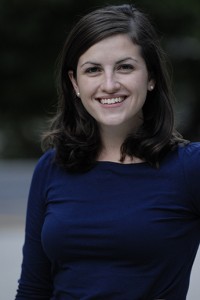I have always wondered about the history of “the Hill.” I knew that it used to only be home to fraternities and the chapters themselves owned their houses years ago, but not much more. I scoured The Epitome and The Brown and White archives and read W. Ross Yates’ book “Lehigh University: A History of Education in Engineering, Business and the Human Condition” to find out the history of “the Hill.”
Through the years — rebuilds, development plans, fires and the occasional condemning of a house — the history of Lehigh’s fraternity and sorority chapter houses has been ever-changing.
The land for “the Hill” was purchased in the late 1800s so that the university could control the streams that supplied water to campus. In 1908, the board of trustees decided to allow fraternities to build chapter houses on the land. At that point, all fraternities had houses off-campus in South or North Bethlehem. This was part of the university culture at the time, since the administration was averse to having students live on-campus and most were boarders in Bethlehem.
The next year, Sayre Park, as it is officially named, was established after a $100,000 donation from the children of Robert Sayre, who was chief engineer of the Lehigh Valley Railroad and helped found Lehigh. A large portion of this money went towards putting in the main roads.
Delta Upsilon was the first chapter to build a house in Sayre, but it was not the building that stands today. Sigma Nu and Psi Upsilon soon followed. Sigma Nu’s house stood near the entrance of Sayre Park and a new house, which is now the Kappa Delta house, was built in the 1960s after a fire destroyed the original. Psi Upsilon’s house is the oldest house on the hill today.
Phi Delta Theta built its house in 1917 and used stone from South Mountain in the construction — the Umoja living community now resides there. Delta Tau Delta built a house on campus in 1914, but it was between present-day Drinker and M&M, where basketball courts now stand. They moved out in 1960 to a new house that they built on the hill, which is now home to Pi Kappa Alpha. The move was because the house was termite-ridden, and, according to the Epitome from that year, in danger of “imminent structural collapse.” For some reason, the university decided to continue to use the building as a residence hall and renamed it “Park House.”
Other fraternities to build houses on “the Hill” in the late 1910s and early 1920s were Theta Delta Chi, which is now home to Alpha Omicron Pi; Phi Gamma Delta, which is now House 104; Beta Theta Pi, which was torn down and rebuilt in the 1960s and Alpha Tau Omega, but the house was in a different location than its present house — it was next to Chi Psi.
During World War II, many chapters struggled to pay the bills with so many brothers serving in the armed forces. Some took in boarders, and Sigma Phi Epsilon and Theta Xi lived together during the war. There were also two fires during those years in Chi Psi and Phi Gamma Delta. Chi Psi rebuilt a house on top of the ruins. Reportedly the brick walls were all that was left at Phi Gamma Delta.
As the late 1950s, 16 fraternities were still in town. To help chapters build houses on the hill, the university established a development program and contributed money to the construction.
Phi Sigma Kappa was one of the first fraternities to build a house on “the Hill” during this push. Tragically, during the construction of its house a 24-ton concrete truck crashed on two workers, killing one and causing the other to have fingers amputated.
In fall 1962, Kappa Sigma moved into its house — but it was not the house it now has, but House 97. Just ten years later, the chapter built its current house and leased the old house to Lambda Chi Alpha.
Other fraternities that moved onto the hill at this time were Kappa Alpha, Sigma Phi Epsilon and Sigma Phi, which is now Gamma Phi Beta’s house.
In 1966, Delta Upsilon built its current house. The same company that designed the renovated University Center designed it and the entire chapter room was moved to the new house.
I will pick up with the rest of the history of “the Hill” next semester. Sneak peek: Alpha Chi Omega temporarily lived in Alpha Omicron Pi’s house during the 90s.






Comment policy
Comments posted to The Brown and White website are reviewed by a moderator before being approved. Incendiary speech or harassing language, including comments targeted at individuals, may be deemed unacceptable and not published. Spam and other soliciting will also be declined.
The Brown and White also reserves the right to not publish entirely anonymous comments.
1 Comment
I’m familiar with the Kappa Delta house which was the Phi Gamma Delta house until 2013. My oldest brother, Douglas Y. Edwards ’61 and I ’67/’70 were brothers of Phi Gamma Delta, and I visited and lived there at various times from 1958 until 1970. During that time, the house never burned down or suffered any major fire damage.
Thomas W. Edwards ’67/’70